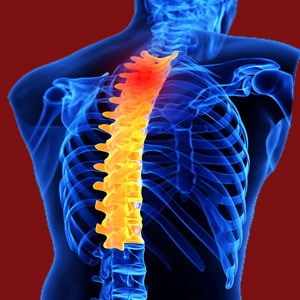
Facet disease is a laughable name for what usually amounts to normal age-related degeneration of the apophyseal joints. The use of the word disease is a very deliberate addition to diagnostic terminology and has been widely seen in the dorsalgia sector of medicine, including such notable examples as degenerative disc disease, degenerative joint disease and Scheuermann’s Disease. It must be know that none of these examples are diseases, including and especially facet joint disease.
Why would diagnosticians choose to utilize the word disease when the process described does not qualify to be called such a damning term? How are these doctors legally able to change proper diagnostic nomenclature to suit their own purposes? Most importantly, what effects are imparted to the patient when told that they are suffering from a disease? If you are interested in the answers to these crucial questions, then this focused dissertation will provide an eye-opening glimpse at the dark side of modern medical science and its financial motivations.
Facet Disease Nomenclature
There are various names that can easily be applied to describe facet joint-related symptomology, without having to resort to the opportunistically invented nickname facet joint disease:
Facet syndrome or facet joint syndrome are the proper diagnostic terms for pain conditions that are known to exist due to zygapophyseal hypertrophy, mechanical failure due to osteophyte formation, or compression of the small nerves within the joint structure itself. Alternate variations of these proper diagnostic terms might include facet arthrosis, facet joint arthrosis, facet arthropathy, facet joint arthropathy or facet joint pain. The last option is generally preferred in cases of non-specific or unknown mechanisms for pain generation when the source of the symptoms is simply known to be the affected joint.
Facet arthritis and facet joint arthritis are both correct diagnostic terms for the structural changes that might be observed in the joint structure, including bone spurring, loss of protective cartilage and general hypertrophy. However, the term facet arthritis does not signify any inherent pain, since the general condition arthritis is not universally painful.
In cases of a pinched nerve caused by facet osteophytes, the diagnosis should be compressive neuropathy due to neuroforaminal stenosis. In cases of ligamentous issues causing facet dysfunction, diagnosis should be ligamentous hypertrophy, ligamentous ossification, ligamentous laxity or ligamentous-enacted hypomobility, depending on the specifics of the condition.
Diagnostic Terminology Motivations
Why would a diagnostician purposefully choose to utilize the word “disease” incorrectly to describe any of these conditions? The answer usually has everything to do with nocebo effect and the underlying financial motivations of the doctor purposefully making the condition seem worse than it truly is. The application of the word disease to any dorsalgia diagnosis, where is does not belong, is nothing short of psychological warfare perpetrated against a patient by their own caregiver. Ignorance is never an acceptable excuse.
If a patient is told that they have facet joint arthritis, they might decide to go home and research the condition for themselves. They will quickly learn that arthritis is completely normal, expected and not inherently painful. They will also learn that only select cases will ever cause any significant pain. This is business suicide for greedy doctors who want to be sure to place every patient into profitable care as soon as possible.
The use of the word disease instantly conjures a terrible vision in the patient’s mind: “I have a disease? Oh my God! I need help!” Yes, the greedy care provider is there ready to offer it… There will likely be no questions asked and no further research needed. It is well known that some doctors hate educated patients who ask questions. By utilizing this term that is universally known to be malignant and pathological, the doctor is basically forcing patient compliance towards whatever treatment recommendation is immediately suggested. It is just business, nothing personal. It should be criminal.
Facet Disease as Psychological Warfare
We have polled tens of thousands of patients regarding their reactions to different diagnostic terms. We have used this test over and over in the above cited examples of degenerative disc disease, degenerative joint disease and even Scheuermann’s Disease, as well as in the subject of this essay, facet joint disease. We have been told without exception that the term disease adds a dark shadow over any diagnosis that was not present using proper diagnostic classification. We already knew this, as this wording is a classic example of the nocebo effect imparted by structurally-based diagnosis in general and worsened by using such exaggerated and damning diagnostic language.
The nocebo effect has been widely studied and serves as a main focus of our own work at The Cure Back Pain Network. We have observed the effects of the nocebo, as well as suffered from it ourselves. The consequences include symptomatic escalation, fear, anxiety, dramatically reduced efficacy of most forms of treatment and sometimes, the permanent view of one’s health as being “damaged”. Once a person sees themselves as damaged goods, their condition is bound to deteriorate, which is exactly what soulless, opportunistic doctors, and especially surgeons, hope for secretly, if not overtly.
This article may seem inflammatory and quite an over-reaction for such a simple misnomer. However, do not be fooled in to thinking the choice of diagnostic wording is accidental or innocent in any way. Be very wary of doctors who utilize such dooming names inappropriately when diagnosing patients. Their intentions might not be all bad, but do you really want to take that chance with your health?
Facet Joint Pain > Facet Joint Syndrome > Facet Disease





